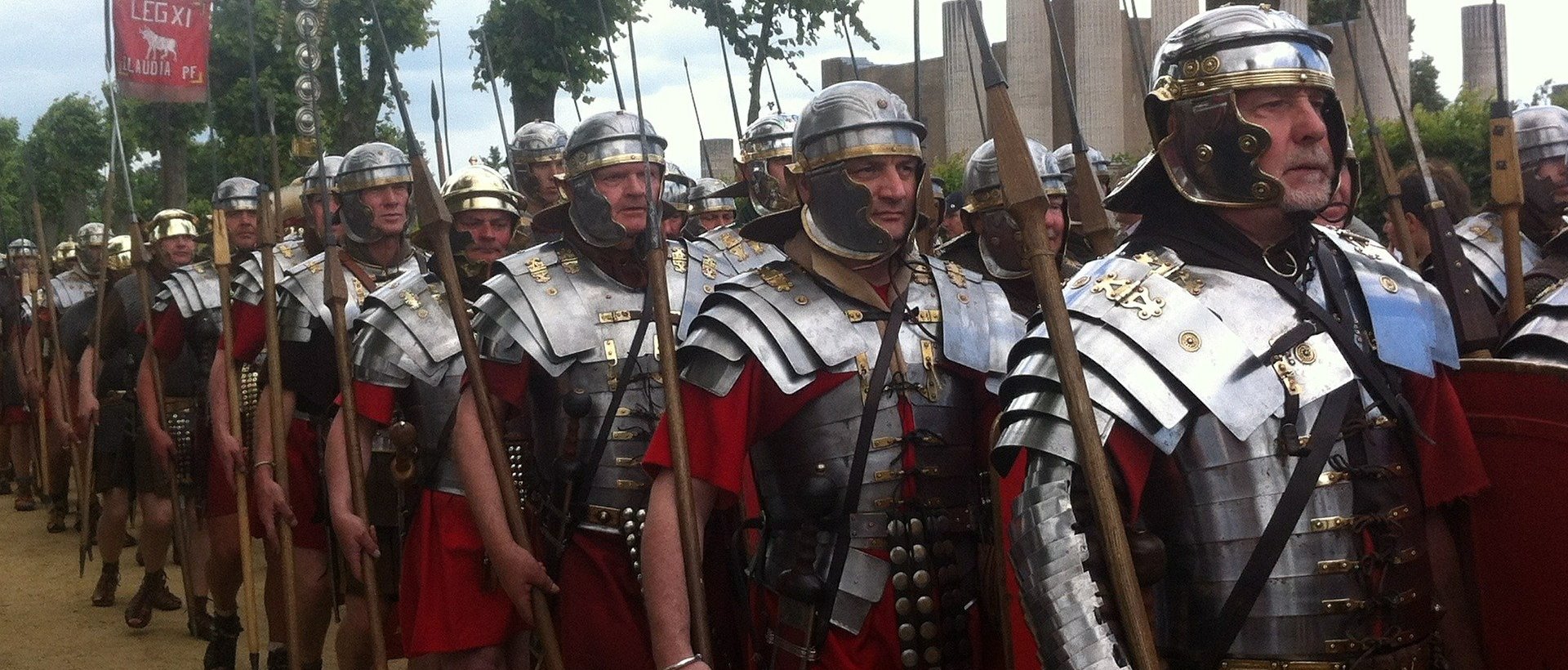Roman Armour and Weapons
Posted on 26th December 2020
Through the centuries of ancient Rome, there were numerous variations to armour and weapons. Many of the changes would represent a soldier’s rank and position.
I have listed here a selection of the most common.
Armour
Galea (Helmet) - Made of bronze and iron with plates to protect the sides of the face.
Lorica Squamata (Scale Armour) – Small metal plates or scales made of iron or bronze connected to a fabric or leather lining in overlapping lines to make a sleeveless tunic.
Lorica Hamata (Mail Armour) – Bronze and iron rings joined together in alternate rows of rings then riveted rings. These made a thigh-length sleeveless shirt with a lining of linen or leather with epaulettes on the shoulders.
Lorica Segmentata (Body Armour or Breastplate) - Many metal strips held together by metal pins or ties, overlapped with and fastened to internal leather straps, covering the shoulders, back and chest down to the waist. The front was in two pieces laced together down the middle of the torso.
Lorica Manica (Arm Guard) – Made of iron or bronze. Overlapping metal plates riveted together covering the shoulder and arm, also riveted to leather straps for tying in place around the arms.
Greaves (Leg Armour) – Pressed sheets of metal (iron or bronze) used to cover the lower leg lined with felt or leather. Tied at the back of the legs with leather straps or laces, worn on one or both legs.
Cingulum Militare (Military Belt) – Leather belt worn around the waist covered in metal plates with a buckle fastening. Strips of leather covered in metal studs, hung at the front in the style of an apron. Used to hold a legionnaires dagger.
Sagum (Cloak) – Military cloak made of wool fastened across the shoulder.
Focale (Scarf) - Worn around the neck to prevent rubbing from the helmet, could also be worn around the body for warmth.
Caligae (Boots) – Open design sandal made from several layers of leather strips to make them strong and durable. They had Hob Nails on the soles for marching over rough and uneven ground.
Weapons
Pugio (Dagger) – Leaf shaped metal blade around 7-11 in (18-28 cm) long and 2 in (5 cm) wide with a metal handle riveted to the blade. Roman Legionnaires used this as a sidearm and it was attached to their waist.
Gladius (Sword) - A short two-sided steel sword no more than 19-23 in (50-60 cm) long, used for stabbing and slashing your enemy; much more effective in hand-to-hand combat than a longer weapon.
Spatha (Sword) – A long straight sword of 1.5-3 ft (50 cm-1 m) long and a 3-8 in (8-20 cm) handle.
Pilum (Javelin) - A 6ft 7in (2 m) long wooden spear used by Legionnaires. It was thrown and could puncture through a shield; it could not be removed from the shield for the enemy to throw back.
Hastae (Spear) - A thrusting spear similar in length to the Pilum with an Iron head and a shaft made of ash.
Plumbata (Throwing Dart) – An iron dart or spearhead, weighted at the other end.
Scutum (Shield) - Oval or rectangle curved shield approximately 41 in (105 cm) high, 16 in (41 cm) wide, 12 in (30 cm) deep taking into account the curve, and ¼ in (5-6 mm) thick, made of three layers of wood glued together, then covered in leather and canvas. In the vertical centre of the shield was a shaped boss (raised thick piece of iron or wood).
Parma (Shield) – Circular shield made from several layers of wood glued together, then covered in leather. An iron boss in the centre, and an iron handle.
Tagged as: Junior Ancient Rome
Share this post:





